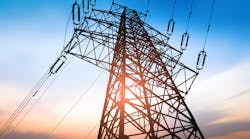ASCE 2025 Infrastructure Report Card: Progress in Utility Investments, Challenges Remain
The American Society of Civil Engineers (ASCE) today released its 2025 Report Card for America’s Infrastructure, highlighting improvements in several critical sectors due to recent federal investments, while also emphasizing ongoing challenges in resilience and long-term planning. Electric utility professionals should take note of key findings in the energy sector, where rapid demand growth, climate impacts, and investment shortfalls remain pressing concerns.
The energy sector received a D+, down from its 2021 rating of C–. D generally means "poor, at risk." The ASCE report card describes a D rating as "infrastructure is in fair to poor condition and mostly below standard, with many elements approaching the end of their service life. A large portion of the system exhibits significant deterioration. Condition and capacity are of serious concern with strong risk of failure."
For over two decades, ASCE’s infrastructure assessments have underscored the need for increased investment to modernize and maintain essential networks. The latest report shows that the Infrastructure Investment and Jobs Act (IIJA), passed in 2021, has positively influenced nearly half of the 18 assessed infrastructure categories. This has led to an overall grade improvement from C- to C. However, despite these gains, ASCE warns that the nation’s infrastructure remains vulnerable due to aging systems, extreme weather events, and inconsistent funding.
Energy Sector Faces Growing Demands and Investment Needs
The energy sector received a downgraded grade in the 2025 report due to concerns over capacity, future needs, and safety. Rising electrification, driven by electric vehicles (EVs) and expanding data centers, is accelerating demand. By 2030, an estimated 35 gigawatts (GW) of additional electricity will be needed—double the 17 GW required in 2022. Utilities must prepare for this unprecedented growth while also meeting federal and state net-zero emissions goals.
The report notes that transmission capacity must double to integrate new renewable energy sources effectively. While the IIJA and the Inflation Reduction Act (IRA) have directed significant resources toward grid modernization and renewable energy, weather-related disruptions continue to pose risks. Since 2000, 80% of electricity outages have been weather-related, with most occurring in the last decade. Strengthening distribution networks and interregional transmission connections will be critical to ensuring reliability.
The Urgent Need for Resilience Investments
Extreme weather events are causing increasing disruptions across the energy sector. In 2024 alone, the U.S. experienced 27 billion-dollar disasters, leading to 568 deaths and over $182 billion in damages. The ASCE report stresses the importance of investing in resilient infrastructure to mitigate future losses. According to a 2024 study, every dollar spent on resilience and preparedness saves communities $13 in post-disaster recovery costs.
ASCE recommends that utilities and policymakers prioritize modernizing infrastructure with resilience-focused designs. This includes adopting the most up-to-date construction codes and standards, integrating asset management practices, and leveraging nature-based solutions to enhance system durability.
Policy Recommendations for Sustainable Infrastructure Funding
To address these pressing infrastructure needs, ASCE outlines several key policy actions:
-
Maintain IIJA investment levels beyond 2026 and fully fund authorized programs.
-
Ensure utilities charge rates that reflect the true cost of maintaining and improving infrastructure.
-
Expand public-private partnerships and explore additional financing mechanisms.
-
Secure the long-term viability of the Highway Trust Fund and State Revolving Funds for clean water projects.
-
Incorporate life-cycle cost analysis in infrastructure planning to optimize long-term investment value.
Implications for Utility Professionals
For electric utility professionals, the 2025 ASCE report underscores the need for continued investment in grid modernization, transmission expansion, and resilience measures. Utilities must balance the growing demand for electricity with the challenges of integrating renewable energy sources, mitigating climate-related disruptions, and securing sustainable funding for long-term infrastructure improvements.
While recent federal investments have set the stage for progress, sustained commitment from utilities, policymakers, and stakeholders is necessary to ensure the reliability and resilience of America’s energy infrastructure for decades to come.





